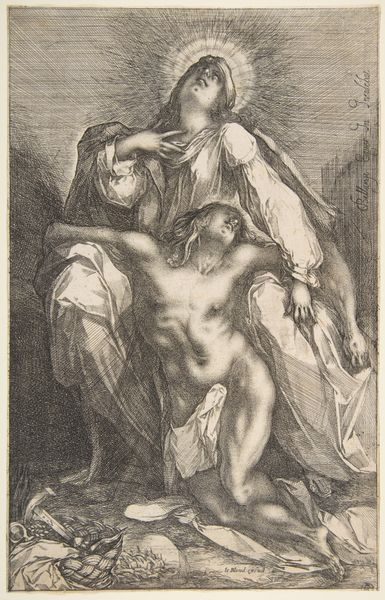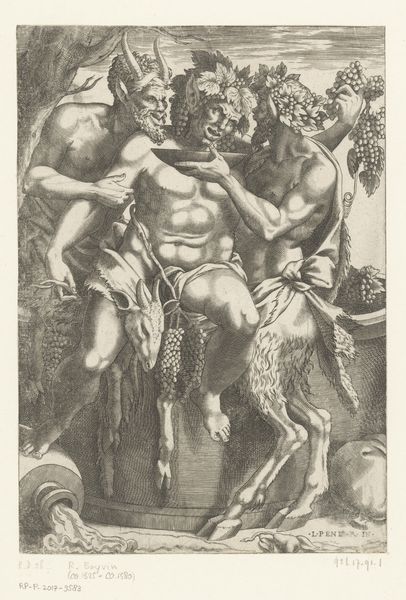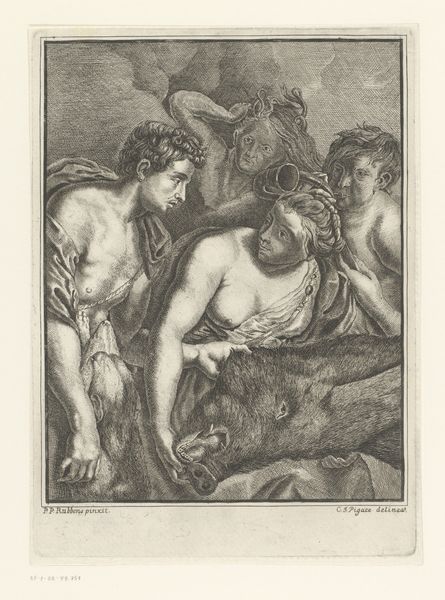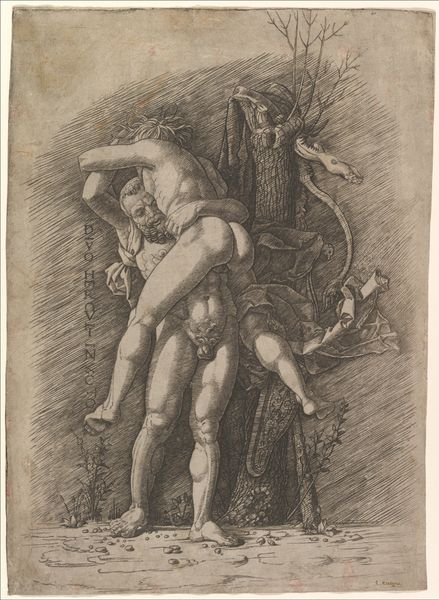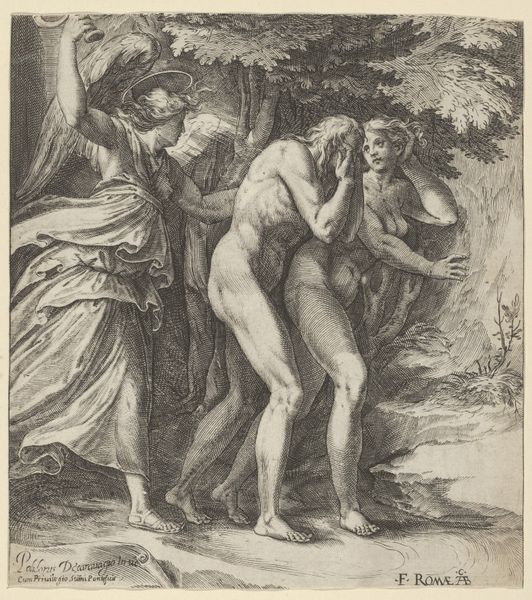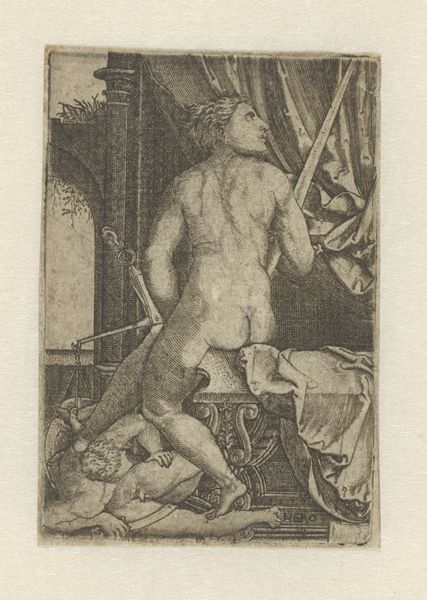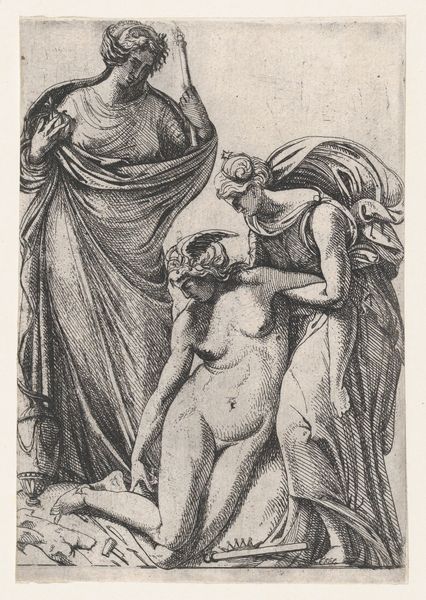
Vrouw met masker en naakte man, mogelijk de droom van Hercules before 1570
0:00
0:00
engraving
#
allegory
#
old engraving style
#
mannerism
#
history-painting
#
nude
#
engraving
Dimensions: height 150 mm, width 112 mm
Copyright: Rijks Museum: Open Domain
This print of a woman with a mask and a naked man, possibly Hercules dreaming, was made by René Boyvin around the mid-16th century. Boyvin was a master of engraving, a demanding intaglio process. He would have used a tool called a burin to cut lines into a copper plate. The plate is then inked, and the surface wiped clean, leaving ink only in the incised lines. Finally, it’s pressed onto paper, transferring the image. The crisp precision of the lines defines the figures’ musculature and the folds of their drapery. Engraving was essential for disseminating images widely in Renaissance Europe. While it's not usually considered on par with painting, it required immense skill. And it gave artists like Boyvin a means to reach a broad audience, making classical subjects available for study and appreciation. This print is a testament to the power of reproductive technologies in shaping cultural understanding.
Comments
No comments
Be the first to comment and join the conversation on the ultimate creative platform.


